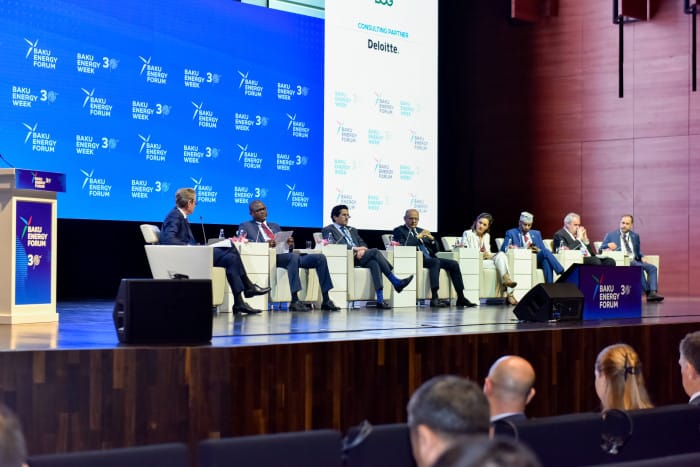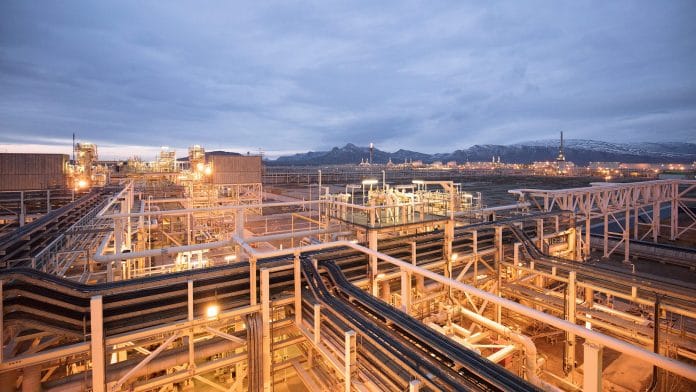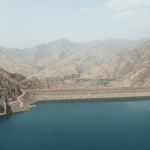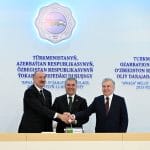As energy demand grows fueled by AI and vehicle electrification, Azerbaijan is actively developing new interconnections with the West, especially for green energy exports, Azerbaijan’s Deputy Minister of Energy Orkhan Zeynalov told NE Global in an exclusive interview in Baku.
“The EU is our strategic partner in energy,” Zeynalov said on the sidelines of the Baku Energy Forum on June 3 ahead of the high-level energy dialogue with the European Commission in Brussels on June 13. He reminded that the memorandum signed in 2022 is a comprehensive document envisaging the doubling of the gas supply volumes to Europe as well as green energy interconnections, methane emission reduction and the investment financing to the infrastructure equities.
Azerbaijan exported 8.2 billion cubic meters (bcm) of natural gas to Europe in 2021. In 2024, this increased to 12.9 bcm, a rise of over 57 percent, Azerbaijan’s Deputy Energy Minister said. “We’re gradually increasing the volume and at the same time more than 50 percent of our total gas export goes to Europe,” he said.
“Right now, we’re exporting gas to 12 countries – 10 countries in Europe and in addition we are also providing gas to Georgia and Turkey. “In terms of the pipeline gas supply, Azerbaijan is one of the leading countries in the world in terms of the geography outreach. But we’re willing to supply more in terms of the new gas fields. By 2030 from five exiting and new fields, we will supply additional eight bcm. Last year production was 50.4 bcm in Azerbaijan. Half of that – about 25 percent – was exported and more than half of that also went to Europe. On top of that eight bcm will be extracted by 2030,” he added.
The BP-led Shah Deniz consortium on June 3 announced it has taken the final investment decision (FID) for the new Shah Deniz Compression (SDC) project, the next stage of development of the giant Shah Deniz gas field, a major supplier of the Southern Gas Corridor, in the Azerbaijan sector of the Caspian Sea.
Zeynalov echoed Energy Minister Parviz Shahbazov’s comments at the ministerial panel at the Baku Energy Forum earlier on June 3 that to secure the expansion of the Southern Gas Corridor and deliver the much-needed gas to Europe, Azerbaijan needs two prerequisites. “The first is financial guarantees from the EU financial institutions. We know that EIB (European Investment Bank) in a legislative way is not able to finance any hydrocarbon infrastructure, but the EBRD (European Bank for Reconstruction and Development) can, and they have the sustainability criteria which can be satisfied. So, financing is very crucial. It can create a general umbrella for the upstream and mid-stream investment and we’re talking about interconnected corridors, so all those investments need to be done at the different segments of the project,” Zeynalov said.
“The second prerequisite in the long-term guarantees of the offtakers, the purchasers. We have clarity on the supply side. We have the demand from the European countries,” he said. “There is a demand for electricity fueled by AI, data mining, industry development. Electricity is basically fueling this development, and it was emphasized during the ministerial session by the moderator as well (Matthew Bryza) that sometimes extra energy can be a major driver for economic growth and right now there is a shortage of energy in certain parts of the region, including Europe and all these interconnectors if you see the directions they are all going to the West,” Zeynalov said.

He noted that Azeri natural gas could support growing European industries, especially in Southeast Europe, and is a critical element of the energy transition and the energy mix. “As of today, we have 14 countries that are requesting natural gas from Azerbaijan – additional 14 bcm on top of the already supplied volumes,” he said. “We are willing and can supply but these two critical elements need to be satisfied in order also to implement this memorandum of understanding,” Azerbaijan’s Deputy Energy Minister explained.
“On June 13, we will have the high-level energy dialogue with the European Commission in Brussels. This will be the third meeting already implementing the Memorandum of Understanding from 2022. It’s co-chaired by the Minister of Energy from our side and the Commissioner (Dan) Jørgensen. So naturally all those issues again will be again reviewed and discussed,” Zeynalov said.
He noted that the first resource is Azerbaijan’s own natural gas reserves but it’s also open to possible transit options in the future, including gas from Turkmenistan, “if a decision could be made from the other side of the Caspian Sea.”
Azerbaijan’s Deputy Energy Minister stressed that the future of energy security is a reliable network of interconnectors in the region, increasing diversification of supply. He recalled that an extension of the Southern Gas Corridor, the Greece-Bulgaria Interconnector (IGB), helped provide much-needed gas to Bulgaria at a critical juncture. He added that Greece is an important partner for the Trans Adriatic Pipeline. According to Zeynalov, TAP will add an extra 1.2 bcm of incremental capacity per year through long term contracts starting from early 2026. TAP’s initial capacity can be expanded in steps to reach at least 20 bcm per year.
Turning to the Vertical Gas Corridor and Bulgaria where the ministers of Greece, Bulgaria and Hungary inaugurated on May 29 the construction of a major branch of the Bulgarian natural gas transmission network, Zeynalov said, “We are aware about these issues. We know that the European Commission is also interested on the Vertical Corridor. We’re providing the gas to Bulgaria. Last year it was almost two bcm. This year it will be a comparable figure also both from Azerbaijani gas and the Shah Deniz consortium,” he said.
Azerbaijan’s green energy transition
Zeynalov reminded that parallel to the 11th Southern Gas Corridor Advisory Council Ministerial Meeting on April 24, Baku hosted the third edition of the Green Energy Advisory Council. “This is very timely because Azerbaijan has embarked on the journey of the green transition. Internally we have 10 green energy projects by 2027. They will deploy two GW of green energy in next two years – $2.7 billion FDI will be directed. At the same time in order to balance the grid, to secure the stability of the grid we’re investing in battery storage so we’re planning additional 250 MW of the battery systems to stabilize those new volumes and after 2027 within the phase two of the three-phase development we have additional 10 projects – offshore wind, onshore wind, solar projects, etcetera – so by 2030 we will deploy more than six GW of additional green energy – four GW of that will be exported mainly from the offshore wind farms and here we come to the regional interconnector projects,” Azerbaijan’s Deputy Energy Minister said.
Building new infrastructure for renewable energy supply to Europe
Azerbaijan is planning four green energy interconnectors, Zeynalov told NE Global. Regarding the first project, he said his country is working with Georgia, Romania and Hungary on the Caspian-Black Sea-Europe Green Energy Corridor. “The feasibility study is already under way and on the concluding phases, in the coming months we will have a commercial investment model,” he said. “The potential here is very good, the source will be windfarms offshore Azerbaijan going all the way though the HVDC (high voltage direct current) cable to Georgia and the subsea cable through the Black Sea to Romania and entering Hungary. Bulgaria has expressed interest. So, in that case we have already submitted the application to the 10-year network development plan and our joint venture, which has been established in Bucharest this year, the GECO Green Energy Corridor Power Company and next year we will also apply for PMI – Project of Mutual Interest from the Commission. This is a strategic project because first it provides connectivity between the Caspian Sea, Black Sea and Southeast Europe. Second, if you see the prices generally in Southeast Europe are a bit high so the extra energy can also stabilize the market and lower the prices so it’s very good for the end customers. We plan to up to export four GW but in a phased approach – 1.3 GW, 1.3 GW, 1.3 GW. So, at each phase there will be one cable, and the start is planned for 2032,” he said.
Zeynalov also noted that Azerbaijan plans to begin hydrogen production by 2035 as part of its Caspian-Black Sea-Europe Green Energy Corridor.
Central-Asia-Azerbaijan green energy corridor
The second green energy project – the Central-Asia-Azerbaijan Corridor – is strategically important from the political, economic and energy security point of view, Zeynalov said. He reminded that a strategic partnership agreement on the development and transmission of green energy between the Azerbaijani, Kazakh and Uzbek governments was signed by the leaders of the three countries on November 13, 2024, at the COP29 climate conference.
“We have great interest from the Saudi Arabia side. The Saudi electricity company has signed with the three countries the initial memorandum of interest on the project, particularly the transmission component and the joint venture for the project will be headquartered in Baku. Next month the JV documents will be signed in Baku. So, feasibility is also starting soon and most importantly there is a good potential to connect this corridor with the Caspian Sea-Black Sea so we can talk about a larger inter-connected corridor starting all the way from Central Asia all the way to Europe,” he said, adding that there is also big interest from Chinese companies, including China Energy, Power China, Datang Corporation in solar, offshore wind, onshore wind, battery storage and pumped hydro storage.
Azerbaijan-Turkey green energy corridor
“The third interconnector is the Azerbaijan-Turkey green energy corridor. It starts from the Nakhchivan region of Azerbaijan. The feasibility study has been just completed by the Boston Consulting Group (BCG) and the final report has been submitted to the government. It has two components. One component is the green energy zone in Nakhchivan, creating green volumes, mostly solar because the radiation level is higher in Nakhchivan but there is also some potential for wind energy. The second component is the interconnector to Turkey and for that we have explored four options: 0.5 GW, one GW, 1.5 and three GW of export. Again, HVDC is being considered so this issue will be reviewed and considered by the task force between Azerbaijan and Turkey. This is also a very important project, and it has two options: One route is direct export from Nakhchivan to Turkey and the alternative route is from Jabrayil hub in mainland Azerbaijan through the Zangezur to Nakhchivan and then Turkey. Both options have been explored in the BCG report,” Azerbaijan’s Deputy Energy Minister said.
Azerbaijan–Georgia–Turkey–Bulgaria green power project
“We have received a proposal from the Bulgarian side during COP29 for a proposed East-West new energy corridor. Bulgaria is trying to become an energy hub in the region soon and this project – Azerbaijan-Georgia-Turkey-Bulgaria connection – starting again from Azerbaijan, land route to Georgia, land route to Turkey and all the way to Bulgaria and to Europe. For this corridor we have just finalized within the working group the scope in terms of reference (ToR), and the next stage is to start consultancy work for the feasibility. This corridor can at some point also merge with the Nakhchivan-Turkey corridor somewhere in Turkey,” Zeynalov said.
Electrification
He reminded that during the opening of the Baku Energy Week, the final investment decisions were approved for the 240 MW Shafag Solar Power Plant (SPP) and the Sangachal Terminal Electrification (STEL) projects. Using the virtual power transmission model, the electricity generated at the Shafag will be transmitted to Azerenergy in Jabrayil, and an equivalent amount of electricity will be transmitted by Azerenergy to the Sangachal terminal in Baku. This will allow for an approximately 50 percent reduction in emissions from terminal operations during the future operation of the Sangachal terminal, Zeynalov said, adding, “In general the green project will be used to decarbonize the oil and gas project.”








